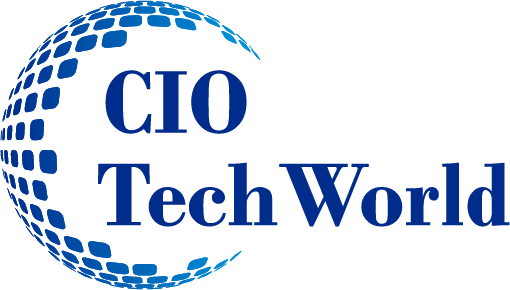Augmented Reality (AR) and Virtual Reality (VR) technologies have revolutionized the way we interact with digital content, opening up new possibilities for entertainment, education, and business applications. This article explores the world of AR/VR development, providing insights into the tools, technologies, and frameworks that empower developers to create immersive experiences.
Popular AR Tools and Technologies
AR development relies on various tools and technologies to create compelling experiences. Some popular AR tools include:
- ARKit: Apple’s ARKit provides developers with a framework to create AR experiences for iOS devices.
- ARCore: Google’s ARCore offers similar capabilities for Android devices, enabling developers to build AR apps for a wide range of devices.
- **Vuforia**: Vuforia is a powerful AR platform that supports marker-based and markerless AR experiences, making it suitable for a range of applications.
- Unity3D: Unity3D is a versatile game engine that also supports AR development, providing a comprehensive set of tools and features for creating immersive experiences.
Popular VR Tools and Technologies
Developers leverage a range of tools and technologies to build VR experiences. Some widely used VR tools include:
- Unity3D: Unity3D, a popular game engine, offers robust VR development capabilities. It provides a comprehensive set of tools, resources, and a vast community for support.
- Unreal Engine: Unreal Engine is another powerful game engine that includes VR development features. It offers high-fidelity graphics and realistic physics simulations for a truly immersive VR experience.
- Oculus SDK: The Oculus Software Development Kit (SDK) provides developers with the tools to create VR applications for Oculus devices. It offers features like hand tracking, spatial audio, and haptic feedback.
- SteamVR: SteamVR is a platform developed by Valve Corporation, enabling developers to create VR experiences compatible with various VR headsets, including those from HTC and Valve.
AR/VR Development Frameworks
AR/VR development frameworks serve as a foundation for building applications by providing pre-built modules, libraries, and tools that simplify the development process. These frameworks offer essential functionalities, such as rendering, tracking, and user interaction, allowing developers to focus on creating unique experiences.
Types of AR/VR Development Frameworks
There are different types of AR/VR development frameworks available, catering to various development needs. Some common types include:
- Marker-based Frameworks: These frameworks rely on markers or specific patterns in the real world to anchor digital content and enhance user interactions.
- Markerless Frameworks: Markerless frameworks utilize computer vision and object recognition techniques to place digital content in the physical environment without the need for markers.
- Web-Based Frameworks: Web-based frameworks leverage technologies like WebXR and WebAR to deliver AR/VR experiences directly through web browsers, eliminating the need for app installations.
- Platform-Specific Frameworks: Some frameworks are designed for specific platforms or devices, offering optimized performance and access to platform-specific features.
Examples of AR/VR Development Frameworks
- ARToolkit: ARToolkit is an open-source framework that supports marker-based AR development. It provides robust tracking capabilities and offers multi-platform support.
- ARCore/ARKit: These frameworks, developed by Google and Apple, respectively, provide AR development capabilities for Android and iOS devices. They offer advanced tracking, environmental understanding, and surface detection.
- Vuforia: Vuforia is a comprehensive AR development platform that supports both marker-based and markerless AR experiences. It offers computer vision algorithms and extensive device compatibility.
- A-Frame: A-Frame is an open-source web framework for building VR experiences. It simplifies the creation of VR content using HTML and JavaScript, making it accessible to web developers.
Choosing the Right Tools and Technologies
When selecting tools and technologies for AR/VR development, several factors should be considered:
- Compatibility: Ensure the chosen tools are compatible with the targeted platforms and devices.
- Features and Capabilities: Evaluate the features and capabilities of each tool to determine if they align with the project requirements.
- Ease of Use: Consider the learning curve and ease of use of the tools, especially if you’re new to AR/VR development.
- Community and Support: Look for tools with an active community and adequate support resources to assist you during development.
Evaluating Tool Features and Capabilities
It’s crucial to assess the features and capabilities of AR/VR development tools to determine their suitability. Some key considerations include:
- Tracking: Look for tools that provide accurate and robust tracking, enabling seamless integration of virtual content with the real world.
- Rendering: Evaluate the rendering capabilities of the tools, ensuring they can deliver high-quality visuals and optimize performance.
- Interaction: Consider the tools’ ability to facilitate user interaction, whether through gestures, controllers, or other input methods.
- Integration: Check if the tools integrate well with other software or frameworks, allowing you to leverage additional functionalities.
Matching Tools to Project Requirements
Choose tools that align with the specific requirements of your AR/VR project. Consider factors such as the target platform, performance needs, development timeline, and available resources. Careful tool selection ensures efficient development and a satisfying user experience.
AR/VR development opens up a world of possibilities, providing immersive and interactive experiences. By understanding the fundamentals of AR/VR, exploring popular tools and technologies, and following best practices, developers can create compelling experiences that captivate users across various industries. As the field continues to evolve, advancements in hardware and the integration of AI will pave the way for exciting applications and experiences.








